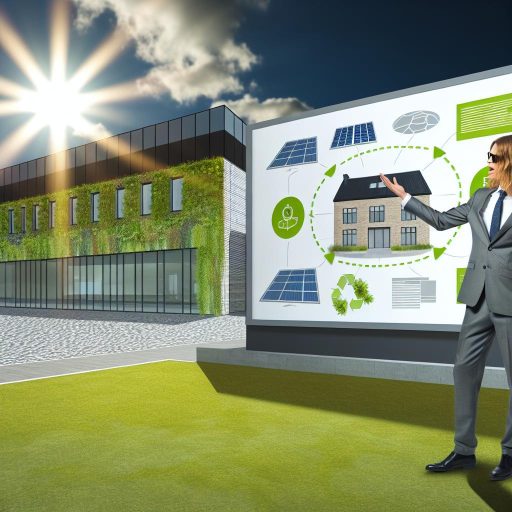Current Trends in the Multi-Family Housing Market Post-Pandemic
Shifts in Demand
The multi-family housing market is experiencing notable changes.
Many renters are now prioritizing bigger spaces for remote work.
Consequently, apartments with home office options are increasingly popular.
Urban areas are seeing a resurgence as people return to city life.
However, some suburbs continue to thrive due to the appeal of more space.
Investment Opportunities
Investors are focusing on multi-family properties as a stable choice.
Rising rental demand drives interest in new developments.
Furthermore, affordable housing investments are now a priority for many.
This trend reflects heightened awareness of housing shortages.
Technological Integration
Technology plays a crucial role in shaping multi-family living spaces.
Smart home features are increasingly sought after by tenants.
Moreover, property management technologies enhance operational efficiency.
This innovation streamlines tenant communication and maintenance requests.
Sustainability Focus
Sustainability remains a key consideration in residential development.
Developers are incorporating green building practices to attract environmentally conscious renters.
Energy-efficient designs reduce costs while benefiting the environment.
Additionally, amenities such as recycling programs resonate with tenants.
Market Resilience
The multi-family housing market displays resilience amid economic fluctuations.
Rental income often remains steady, serving as a reliable revenue stream.
This stability appeals to both seasoned and new investors alike.
Potential tax advantages further enhance the attractiveness of these investments.
Implications of Emerging Trends
The multi-family housing market is evolving rapidly post-pandemic.
Investors should pay attention to emerging trends for optimal opportunities.
By leveraging shifts in demand and technology, they can maximize returns.
Maintaining a focus on sustainability will also prove beneficial.
Demographic Shifts Driving Demand for Multi-Family Housing
Millennial and Gen Z Trends
Millennials and Gen Z currently make up a significant portion of renters.
These younger generations prioritize flexibility and urban living.
Consequently, they often prefer multi-family housing options.
They seek amenities that enhance their lifestyle and social experiences.
Increased Urbanization
Urban areas continue to grow at an impressive rate.
This trend drives demand for accessible housing in metropolitan regions.
Multi-family housing offers efficient living spaces in densely populated cities.
As cities expand, developers increasingly focus on multi-family projects.
Aging Population
The aging baby boomer population influences housing demand.
Many seniors prefer downsizing to simpler living arrangements.
Multi-family housing provides suitable options for retirees.
Communities often include features that cater to older residents.
Changing Family Structures
Family dynamics are evolving across various demographics.
Single-parent households and multi-generational families are on the rise.
These changes create diverse housing needs that multi-family units can meet.
In addition, flexible space configurations allow for household adaptability.
Impact of Remote Work
The shift to remote work has transformed living preferences.
Many individuals now prioritize location over proximity to the workplace.
As a result, they increasingly choose urban multi-family units.
This trend supports a blend of professional and personal lifestyles.
Impact of Interest Rates on Multi-Family Housing Investment Opportunities
Understanding Interest Rates
Interest rates play a crucial role in the multi-family housing market.
They directly influence the cost of mortgage financing.
Higher interest rates generally lead to higher borrowing costs for investors.
Consequently, this can dampen demand for multi-family properties.
Current Trends in Interest Rates
Recently, interest rates have seen significant fluctuations.
These changes impact both buyers and sellers in the housing market.
For example, rising rates can lead to a slowdown in property appreciation.
This situation can create opportunities for investors looking for bargains.
Effects on Investment Decisions
Investors are currently reassessing their strategies in response to interest rate changes.
Some may seek to invest in cash-flow-positive properties.
Additionally, properties in high-demand areas remain attractive despite rising costs.
Moreover, seasoned investors often pivot towards creative financing options.
Potential Opportunities Amidst Challenges
Despite challenges, opportunities remain in the multi-family sector.
For instance, experienced investors can leverage lower competition during downturns.
Furthermore, economic uncertainty often leads to increased rental demand.
Investing in emerging markets can also yield significant returns.
Long-Term Perspectives
Understanding the broader economic context is vital.
Historically, multi-family housing has remained resilient in various economic conditions.
Thus, balancing risk and reward is crucial for long-term success.
Investors may benefit from analyzing regional market trends carefully.
Explore Further: Commercial Real Estate Law for Foreign Investors
Emerging Markets and Geographical Hotspots for Multi-Family Investments
Identifying Emerging Markets
Emerging markets can offer high potential returns for multi-family investments.
Investors should look for regions experiencing economic growth and urbanization.
Strong job growth and population influx typically drive demand for housing.
Areas with new transportation infrastructure also attract residents and investors.
Research indicates that markets in the Southeast and Southwest are booming.
Cities like Austin, Nashville, and Charlotte have high demand for rental properties.
Investor-Friendly States
Some states are particularly appealing for multi-family investments.
Texas continues to lead, due to its strong economy and diverse industries.
Florida’s population growth fuels demand for rental housing.
Arizona and Georgia also present lucrative opportunities for savvy investors.
These states offer favorable regulations and tax incentives for landlords.
Geographical Hotspots
Certain neighborhoods within larger cities hold significant investment potential.
Investors should consider up-and-coming areas within metropolitan regions.
For instance, neighborhoods in Atlanta and Denver are experiencing revitalization.
Benefits include affordable pricing and increasing property values.
Furthermore, areas near universities or major employers often attract renters.
Market Trends to Watch
Understanding market trends is crucial for informed investment decisions.
Rising interest in sustainable living is reshaping multi-family projects.
There is also an increasing demand for amenities like fitness centers and coworking spaces.
Additionally, remote work trends are altering preferences for rental locations.
Future markets may shift towards suburban areas that offer more space.
Leveraging Technology
Technology is transforming how investors identify and evaluate opportunities.
Data analytics tools can provide insights on rental demand and pricing trends.
Moreover, virtual tours and online leasing platforms enhance the property search experience.
Utilizing technology can streamline the investment process and reduce risks.
Explore Further: Commercial Real Estate Local SEO Strategies for Targeted Lead Generation
The Role of Technology and Digital Platforms in Property Management
Introduction to Technology in Property Management
Technology has transformed property management in recent years.
Digital platforms enhance operational efficiency and tenant experience.
Moreover, these innovations streamline processes for property managers.
Benefits of Using Digital Platforms
One major benefit is improved communication between tenants and managers.
Digital platforms facilitate quick responses and notifications.
Additionally, they allow tenants to report maintenance issues seamlessly.
This leads to faster resolutions and increased tenant satisfaction.
Automation and Its Impact
Automation reduces the manual workload for property managers.
For example, rent collection can now occur automatically.
This ensures timely payments and reduces late fees.
Furthermore, automated reminders can help keep everyone informed.
Data Analytics for Informed Decisions
Data analytics play a crucial role in property management strategies.
Managers can analyze tenant data to understand needs better.
This insight helps tailor services for improved tenant retention.
Transactions also benefit from analytics, enhancing revenue opportunities.
Enhancing Security with Technology
Technology improves security measures in multi-family housing.
Smart locks and surveillance systems enhance resident safety.
Real-time alerts notify managers of potential security breaches.
This ensures a safer living environment for all residents.
Integrating Smart Home Features
Smart home technologies are increasingly popular in rental properties.
These features include smart thermostats and lighting systems.
They contribute to energy efficiency and appeal to tech-savvy renters.
Ultimately, these enhancements can justify higher rental prices.
Challenges of Adopting New Technologies
Despite the benefits, challenges exist in implementing new technologies.
Property managers must invest in training staff to use these tools.
Additionally, initial costs can be a deterrent for some owners.
Yet, the long-term advantages often outweigh these challenges.
Future Trends in Property Management Technology
The future of property management will involve even more innovations.
Artificial intelligence and machine learning will play significant roles.
These advancements will improve predictive analytics for property managers.
As a result, decision-making will become more data-driven and efficient.
Gain More Insights: Eviction Process for Commercial Tenants Explained

Sustainable Building Practices and Their Influence on Investment Appeal
Growing Demand for Eco-Friendly Developments
The demand for sustainable multi-family housing continues to rise.
Investors recognize the benefits of eco-friendly developments.
Green building practices attract environmentally conscious tenants.
This creates a competitive edge in the housing market.
Financial Incentives and Benefits
Sustainable building often leads to reduced operating costs.
Long-term savings on utilities enhance overall profitability.
Additionally, local governments offer tax incentives for green projects.
These financial benefits significantly boost investment appeal.
Enhanced Property Value
Properties that adhere to sustainable practices typically command higher values.
Eco-friendly features resonate with potential buyers and investors.
Research shows that green-certified buildings appreciate faster.
This positive trend enhances the long-term investment strategy.
The Role of Technology in Sustainable Development
Innovative technologies facilitate sustainable building practices.
Smart home systems improve energy efficiency remarkably.
Additionally, renewable energy sources reduce reliance on traditional power.
These technological advancements appeal to modern investors.
Community and Social Responsibility
Investors prioritize properties that contribute positively to communities.
Sustainable developments promote social equity and environmental health.
This alignment with community values enhances brand reputation.
Such factors lead to higher occupancy rates and tenant loyalty.
The Future of Multi-Family Investments
The future of multi-family housing is leaning toward sustainability.
Investors must adapt to changing market demands and tenant preferences.
Long-term strategies should incorporate sustainable building practices.
Ultimately, these efforts will ensure continued growth and profitability.
You Might Also Like: Multi-Family Housing vs. Single-Family Homes for Real Estate Investors
Financing Options and Strategies for Aspiring Multi-Family Investors
Understanding Financing Basics
Every aspiring investor should know the financing basics.
Financing plays a crucial role in your investment journey.
Understanding different financing options empowers your decisions.
Conventional Mortgages
Conventional mortgages are a popular choice for many investors.
These loans often offer lower interest rates.
Additionally, they can provide long repayment terms.
FHA Loans
FHA loans are designed for first-time homebuyers.
They require a lower down payment compared to conventional loans.
These loans also have more flexible credit score requirements.
Portfolio Loans
Portfolio loans are held by the lender, not sold on the secondary market.
This allows for more customized loan terms.
These loans can be beneficial for unique properties.
Hard Money Loans
Hard money loans are short-term loans provided by private investors.
They typically carry higher interest rates.
However, they can close quickly, which is advantageous in competitive markets.
Creative Financing Strategies
Creative financing can help you acquire properties with little cash upfront.
Seller financing allows you to negotiate terms directly with the seller.
Lease options provide a way to control a property before purchasing it.
Understanding Investment Strategies
Your investment strategy shapes your financing needs.
Buy-and-hold investors often use long-term financing.
Flippers may prefer short-term loans for quick turnarounds.
Working with Professionals
Consulting with financial professionals is vital.
A real estate lawyer can help you navigate complex agreements.
Furthermore, a financial advisor can guide your investment strategy.
Building Equity Over Time
Investing in multi-family properties allows for equity growth.
As property values increase, your equity builds steadily.
Additionally, rental income can enhance your cash flow.
Importance of Due Diligence
Always perform due diligence before financing a property.
Research local market trends and property conditions.
This knowledge will help you make informed financing decisions.
Analyzing the Competitive Landscape
Key Players in the Multi-Family Sector
The multi-family housing market has numerous key players driving growth and innovation.
Prominent real estate investment trusts like AvalonBay Communities are significant contributors.
They focus on high-quality rental apartments in urban areas.
Similarly, Equity Residential stands out with its extensive portfolio across major markets.
Additionally, major developers like Related Companies are known for large-scale projects.
They primarily target markets with high demand for rental housing.
Another influential player is Greystar, known for its property management expertise.
They manage thousands of multi-family units nationwide.
Moreover, local developers also play vital roles within communities.
These firms understand regional demands and local zoning laws.
Investment Trends and Strategies
Investors are increasingly focusing on sustainability in multi-family developments.
They prioritize properties with energy-efficient features to attract environmentally conscious tenants.
Furthermore, there is a growing interest in affordable housing initiatives.
This trend responds to the rising cost of living in many urban centers.
Investors also look to urban renewal projects, revitalizing older neighborhoods.
These projects often yield high returns with increasing housing demands.
Market Dynamics and Challenges
Market dynamics are shaping the competitive landscape drastically.
For instance, interest rates have a direct effect on financing options.
Higher rates may deter some investors and slow project initiations.
Additionally, labor shortages impact construction timelines and costs.
Moreover, changing regulations can create uncertainties for developers.
Investors must continually adapt to these shifting environments.
Overall, a keen understanding of market dynamics fosters successful investments.




